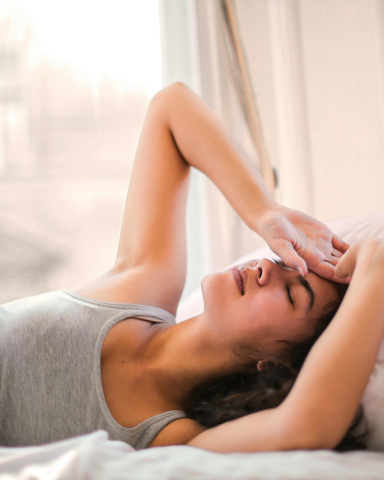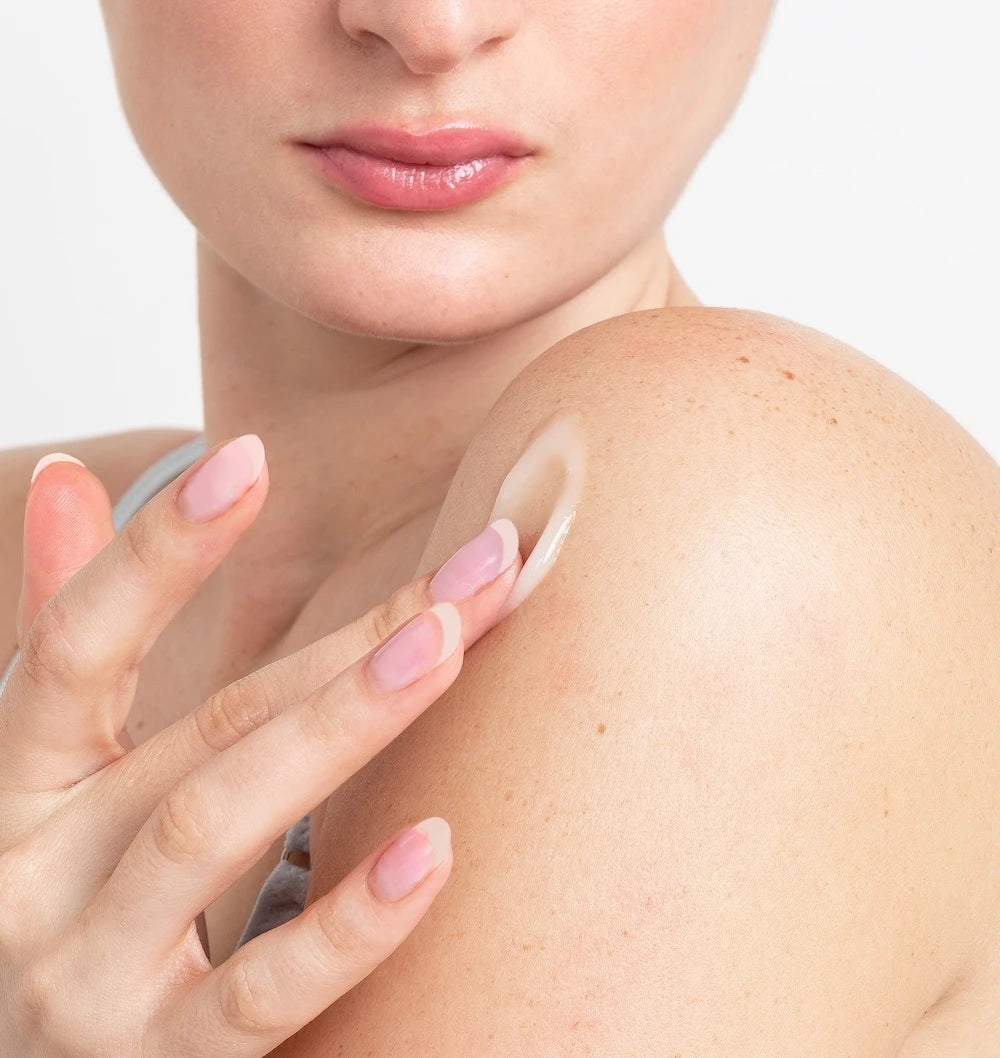You dread the end of your menstrual cycle every month? Premenstrual Syndrome ( SPM) can be a real challenge for many women. Ancestral cultures associate the feminine cycle with the lunar cycle which also includes 28 days. Like the Moon which passes from darkness to light, women also go through the menstrual cycle according to the fluctuation of their hormones. Also, it is up to each person to learn to feel their body and its emotions throughout their cycle. Let's explore the natural treatments for premenstrual syndrome available to you to best experience this period of monthly introspection.
Premenstrual syndrome
Understanding the phases of the menstrual cycle
The female cycle is made up of 4 phases: the menstruation period, the follicular phase which follows until ovulation and the luteal phase which completes the cycle. These 4 phases can be compared to the 4 seasons, by the energy that is specific to them.
Menstruation
The period of periods is associated with winter, energy levels are at their lowest, as are hormones, and it is recommended to slow down as much as possible. The woman is more sensitive during this period, she can also feel her intuition, or her vision, with more clarity. This period corresponds to the phase of the new moon.
This is why, beyond rest, you should give yourself time to listen to your needs, your body and your emotions. The energy of this period is not in action, but rather in welcoming what nourishes us. These can be walks in nature, creative activities, relaxation time or even moments to take care of your body.
👉🏼 Discover the Omri Guided Video Rituals through which we accompany you towards a global experience of well-being, in encouraging you to consciously take care of yourself.
The follicular phase
The following week comes spring or the follicular phase, which precedes ovulation. A symbol of renewal, the body and mind regain energy, while estrogen levels rise. Women then feel more directed towards the outside world and towards their projects. This is a period of planning and research, also conducive to physical activities.
Ovulation
The period of ovulation, in the middle of the menstrual cycle, corresponds to summer and the energy of the full moon. Estrogen levels are then at their highest. At the same time, women find themselves in their full expression, are more sociable and focused on the manifestation of their projects.
The luteal phase
Finally, comes the luteal phase before the return of menstruation. It corresponds to fall, as we prepare to close the last week of the women’s cycle. Estrogen levels drop while progesterone levels rise. It's time to go back inside, the outside world can seem too overwhelming.
Premenstrual syndrome is likely to intensify if you don't pay attention to your body's signs. Instead of resisting the tasks that we cannot accomplish during this period, it is much better to take our foot off the gas and let new inspiration emerge.
Define the symptoms of premenstrual syndrome
PMS represents a set of physical and emotional symptoms occurring during the luteal phase. They gradually fade with the onset of periods.
According to the Vidal medical dictionary, 50% of women are subject to these symptoms, sometimes very intense:
- tension in the breasts,
- bloating and weight gain,
- abdominal cramps,
- digestive problems, nausea, loss or increase of appetite,
- headache,
- lack of energy and fatigue,
- hypersensitivity,
- difficulty concentrating.
The decrease in estrogen after the ovulation phase seems to be the origin of these different symptoms. The increase in progesterone levels, released to prepare for possible fertilization, is one of the reasons for bloating experienced during the luteal phase. According to INSERM, deficiencies in serotonin, magnesium and calcium could also influence the manifestations of premenstrual syndrome.
Listening to your body in order to better understand your own experience of premenstrual syndrome is the first step to experiencing this sensitive period with serenity.
Natural treatments for premenstrual syndrome
Food during the luteal phase
In order to alleviate PMS symptoms, we recommend avoiding the following products:
- foods high in salt which contribute to water retention and bloating,
- foods high in sugar, which can cause fluctuations in blood sugar and affect mood,
- foods rich in caffeine and stimulants in general, which can increase anxiety and tension.
Instead, choose a diet rich in fruits and vegetables, whole grains and lean proteins and adopt the following tips in your diet:
- Favor an anti-inflammatory diet (inflammation alters the production of hormones) thanks to foods rich in omega-3 such as nuts, avocados, spinach or even oily fish;
- Consider including foods like artichokes or green leafy vegetables to ease digestion and support the liver;
- Include root vegetables like carrots, sweet potatoes, beets or squash to fill up on minerals while calming and nourishing the body;
- Use spices such as cumin, fennel, ginger and turmeric;
- Opt for simmered, steamed or grilled dishes and avoid raw foods to support your digestion and maintain your energy level.
Let us also mention the maca of the Andes and the aguaje from Amazonia for hormonal balance. Supplementation with food supplements rich in calcium, magnesium and vitamin B6 will also accompany the end of the menstrual cycle.
The gut microbiota, often described as a “second brain,” plays a major role in our overall health, including in the management of premenstrual syndrome. Probiotics, combined with a balanced, fiber-rich diet, support a healthy microbiota, which contributes to both mental health and immune system support.
Medicinal plants for hormonal balance
Herbal medicine represents a great ally for balancing the hormonal fluctuations of the menstrual cycle thanks to medicinal plants such as chaste tree or dong quai for example.
Essential oils, for their part, provide both an olfactory and sensory response. Clary sage and marjoram can be particularly useful for hormonal balance. You can use them for diffusion, massage or even in a bath.
Rosemary, by stimulating micro-circulation, will also help relieve menstrual cramps, as will cinnamon which can be used in the form of infusions. Finally, chamomile and valerian will help soothe you.
👉🏼 Discover our Invigorating Chinese Balm based on wintergreen, camphor rosemary, cajeput, eucalyptus staigeriana and CBD. Ideal for pain related to premenstrual syndrome when applied to the lower abdomen.
Therapies adapted to the treatment of premenstrual syndrome
Acupuncture represents an age-old practice that has proven itself in the treatment of premenstrual syndrome. By working on better circulation of energy, also called Qi, it helps balance hormones, relieve pain and promote overall feeling of well-being.
Massage and reflexology are also excellent methods to promote relaxation. These techniques can also help relieve muscle tension and improve circulation.
The routine favorable to the end of the menstrual cycle
When premenstrual syndrome proves particularly difficult, there is no point in trying to fight against your body, the symptoms will only intensify. Adapt your days to welcome rather than resist your body's signals.
The movement to alleviate PMS symptoms
Physical activity, gentler during this period, will help reduce the symptoms of premenstrual syndrome, through the release of endorphins. It's not about doing intense workouts, but rather choosing an activity that you enjoy and that makes you feel good, in tune with your body.
In addition, some yoga teachers offer classes specifically adapted to the female cycle and its fluctuations.
Relaxation techniques
Yin yoga or restorative yoga practices are particularly adapted to the period of premenstrual syndrome by combining movement, meditation and relaxation. They relieve your symptoms by allowing you to reconnect with your body, your emotions and your mind. They lead to slowing down the pace compared to more dynamic yang practices by relaxing on postures for several minutes.
Yin yoga, inspired by Taoist philosophy, works on the deep tissues of the body including fascia, joints and ligaments. The main areas of the body worked are the hips, spine and shoulders. Thanks to a profound release of tensions, this practice leads to letting go. Like acupuncture, yin yoga ensures better circulation of energy through pressure/compression games in the body. It consists of postures practiced on the ground, being linked to the energies of the Earth. Fascia ensures better flexibility, mobility and fluidity: feminine energy par excellence! Yin yoga is an ideal practice to familiarize yourself with meditation through movement.
Restorative yoga is also practiced on the floor and is accompanied by various accessories such as cushions so that effort remains minimal for the benefit of maximum relaxation.
Keep a cycle diary
There are applications to record the dates of your menstrual cycles. These will allow you to view the history of your periods as well as their duration on a calendar and to better anticipate delicate periods.
Keeping a cycle diary is also a valuable tool for understanding the evolution of your symptoms throughout the month. It can help you identify triggers, spot trends, and take proactive steps to reduce your symptoms. Expressing your emotions and needs on paper will also help you navigate this time better.
Take care of yourself
Taking care of yourself is an essential step in the natural treatment of premenstrual syndrome. Remember to rest as much as necessary and prioritize the quality of your sleep. Whether by immersing yourself in a bath, spending more time in nature or reading, these special moments will prove particularly regenerating.
Depending on your professional situation, also remember to anticipate by planning lighter tasks during this period. For example, during this end-of-cycle phase, you can take stock of the past month and set new objectives for the next four weeks.
Premenstrual syndrome represents a difficult phase for almost half of women of childbearing age, but also the ideal time to take the time to listen to your body. Naturopathy will accompany you for a natural treatment of premenstrual syndrome towards a more peaceful and regenerative period as well as a better knowledge of yourself and your body.
Sources:
Premenstrual syndrome, Vidal Medical Dictionary
#PayeTonCycle: What is premenstrual syndrome ?, INSERM





